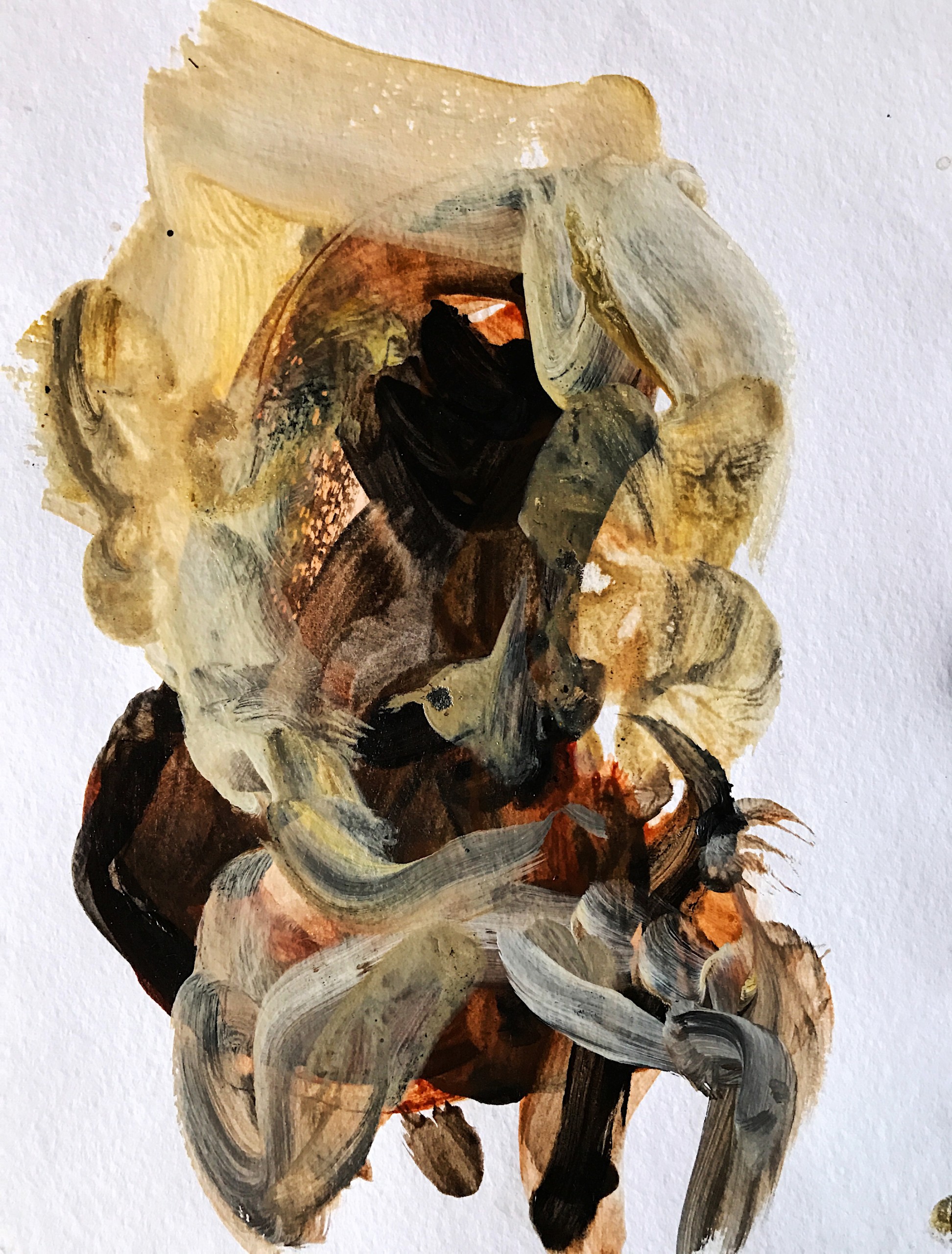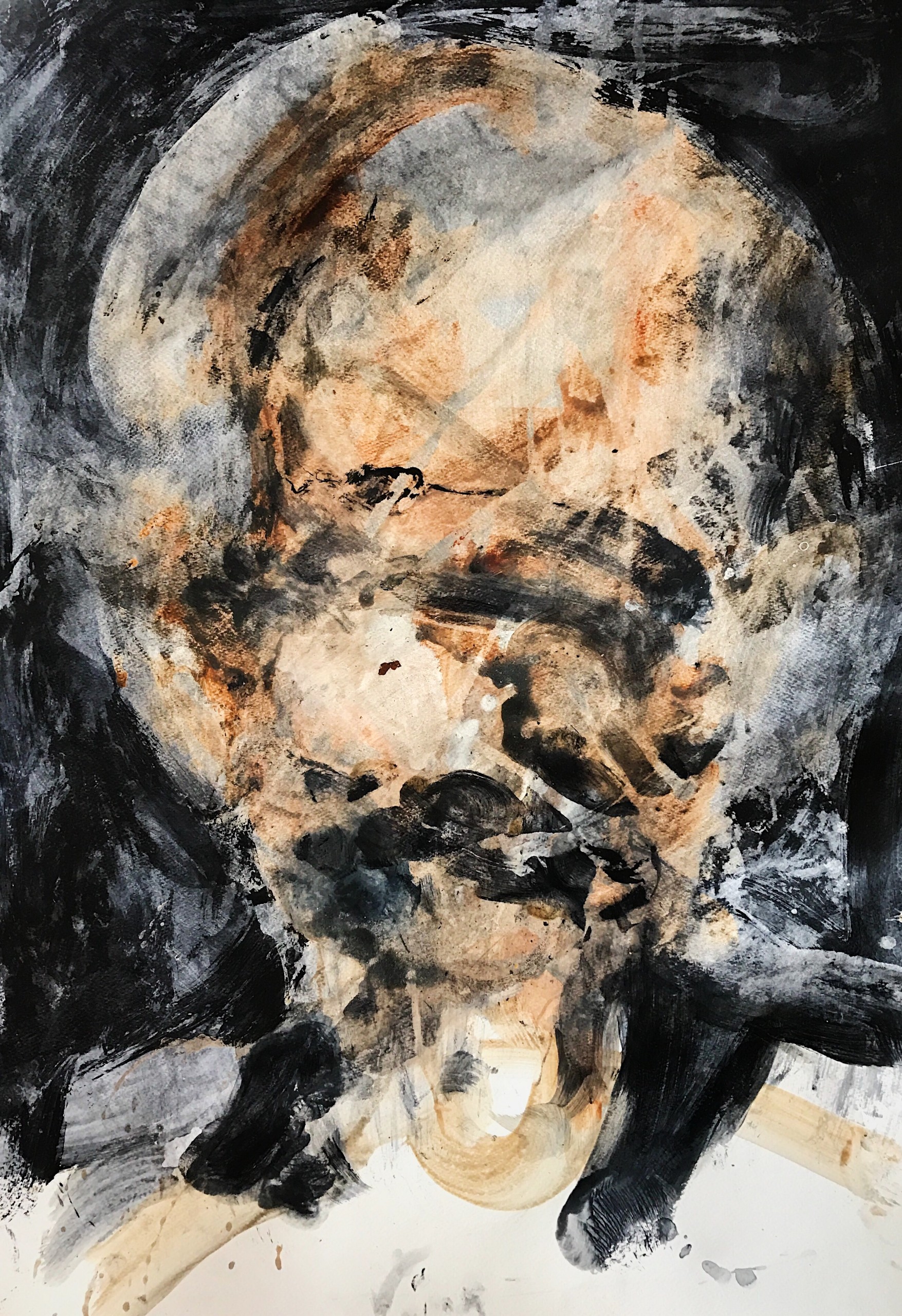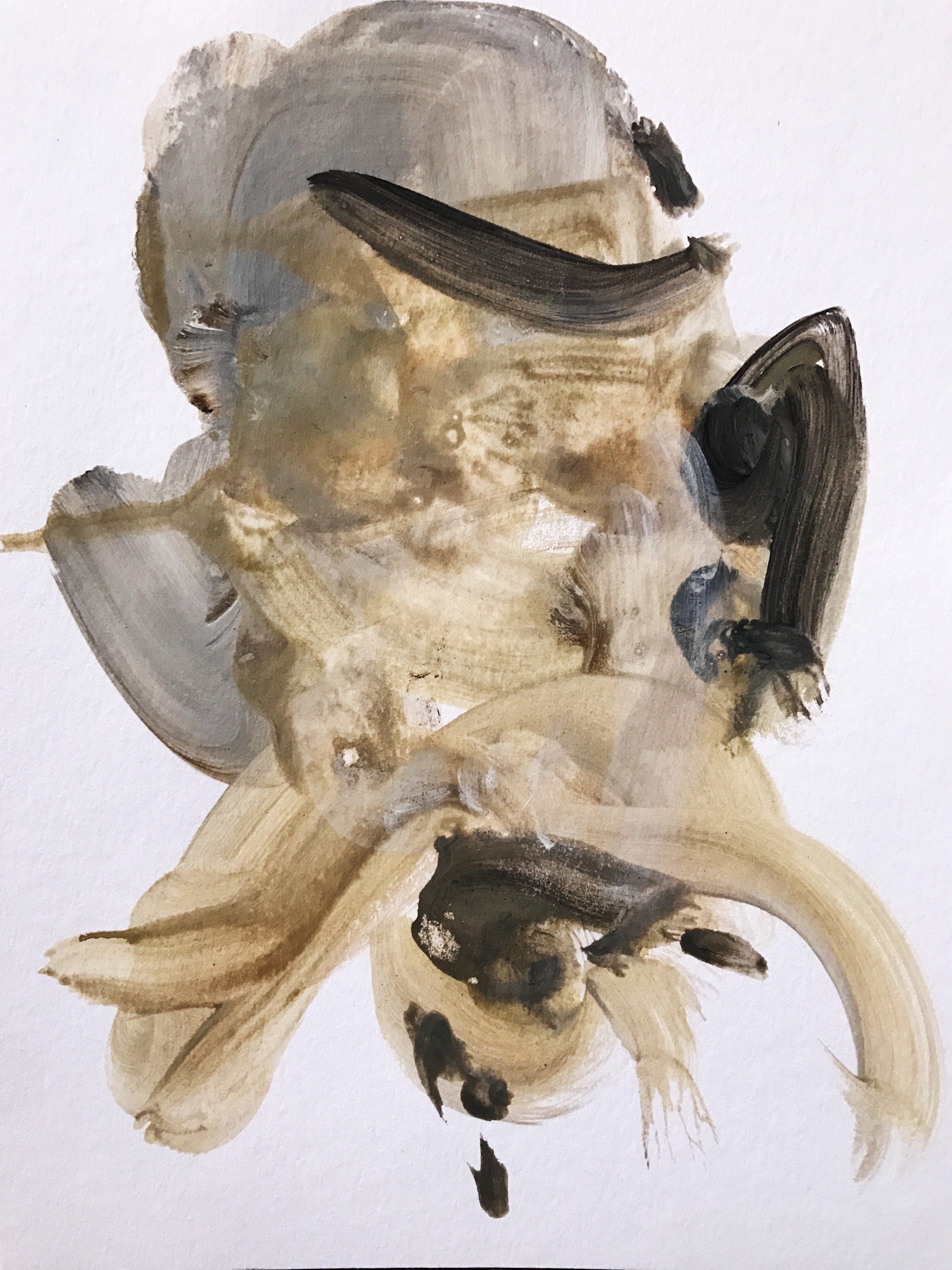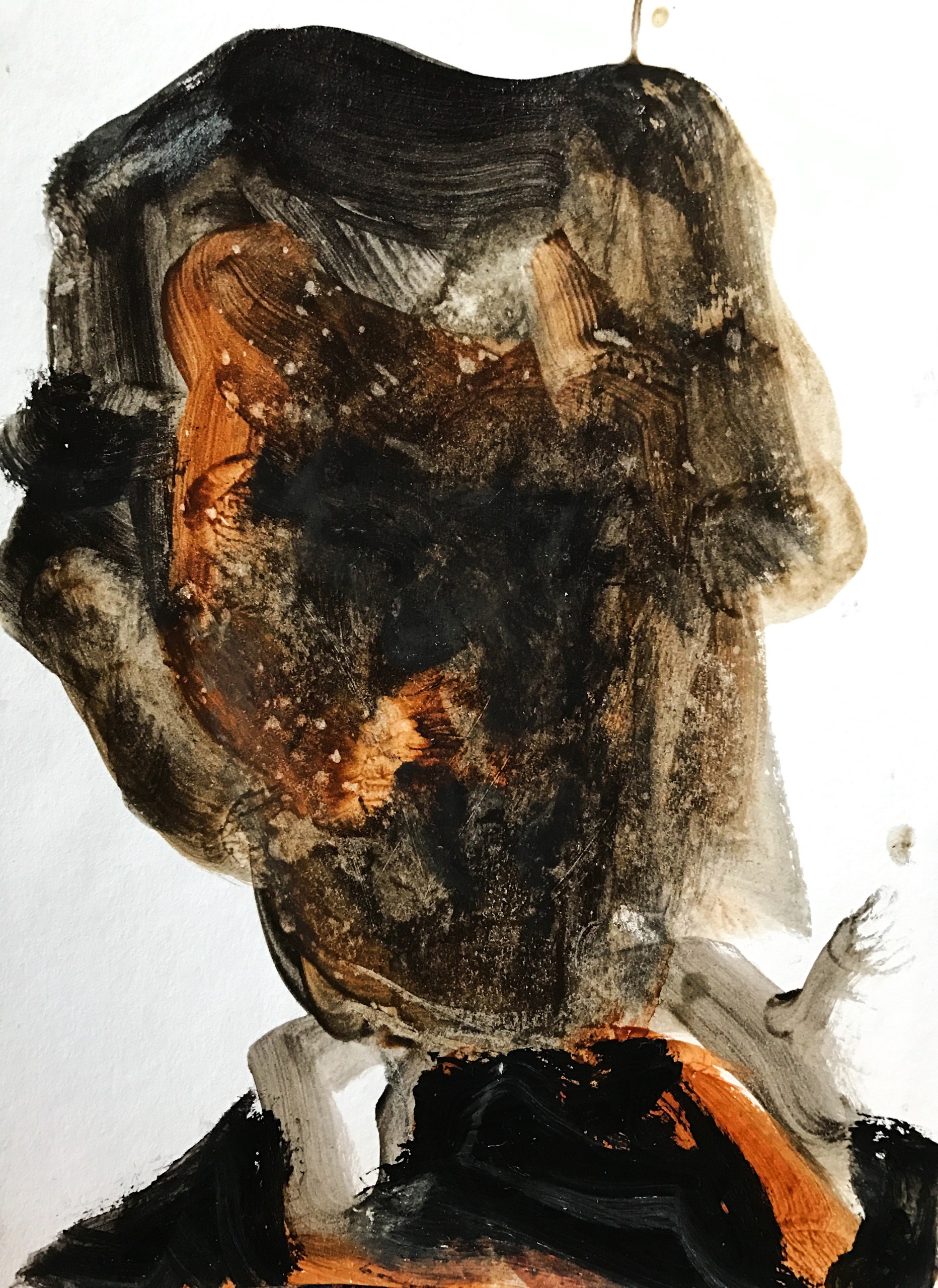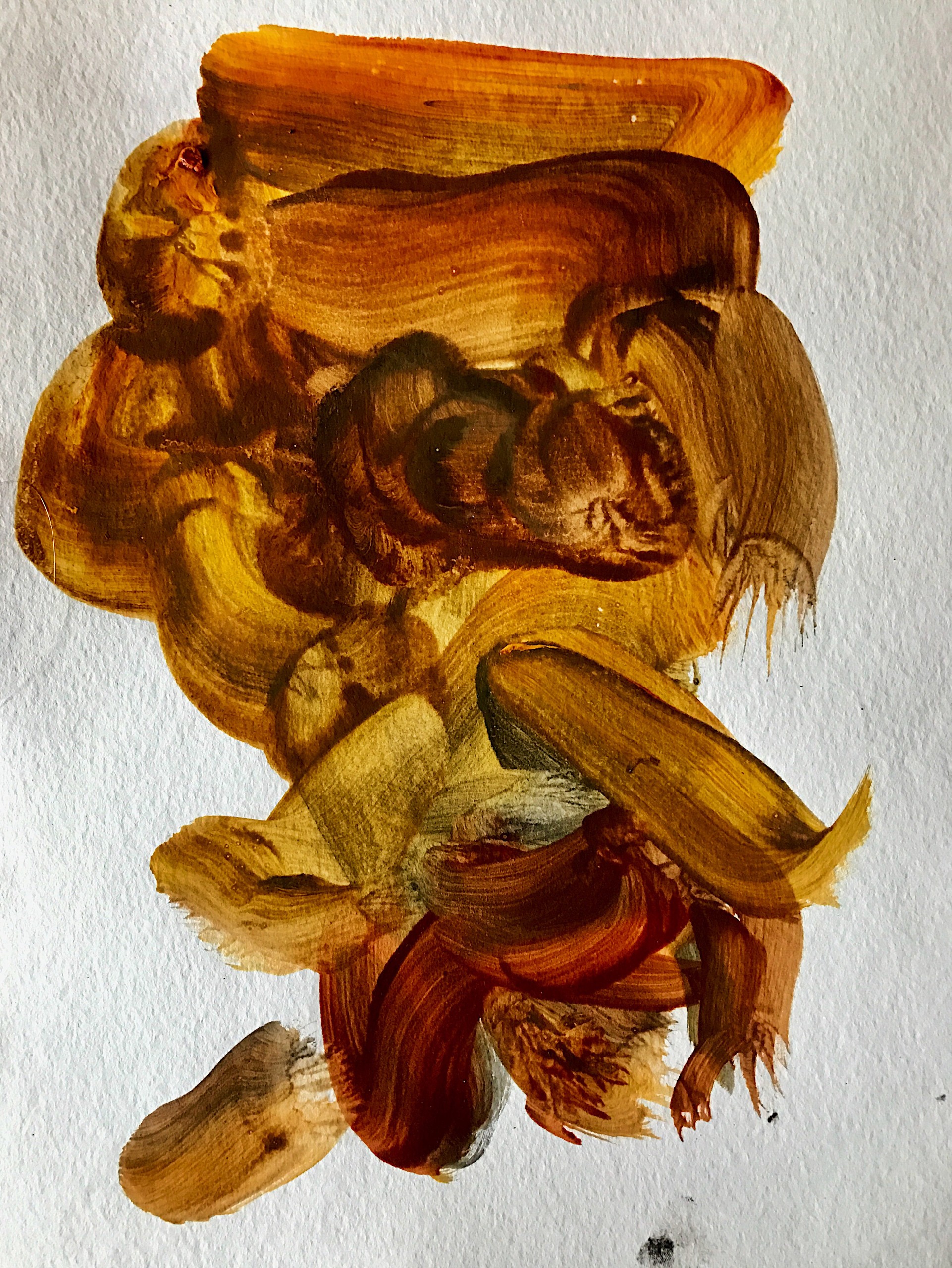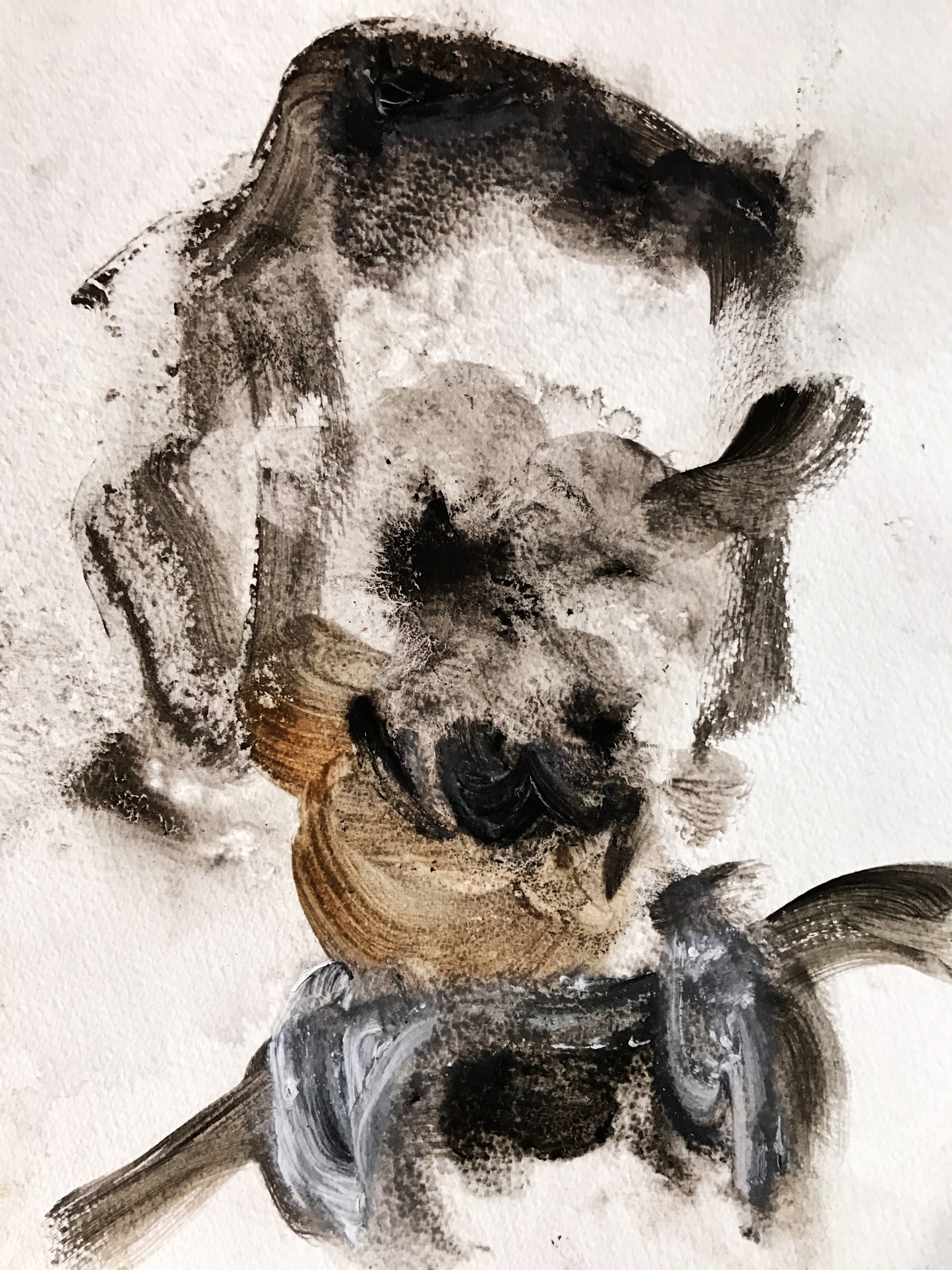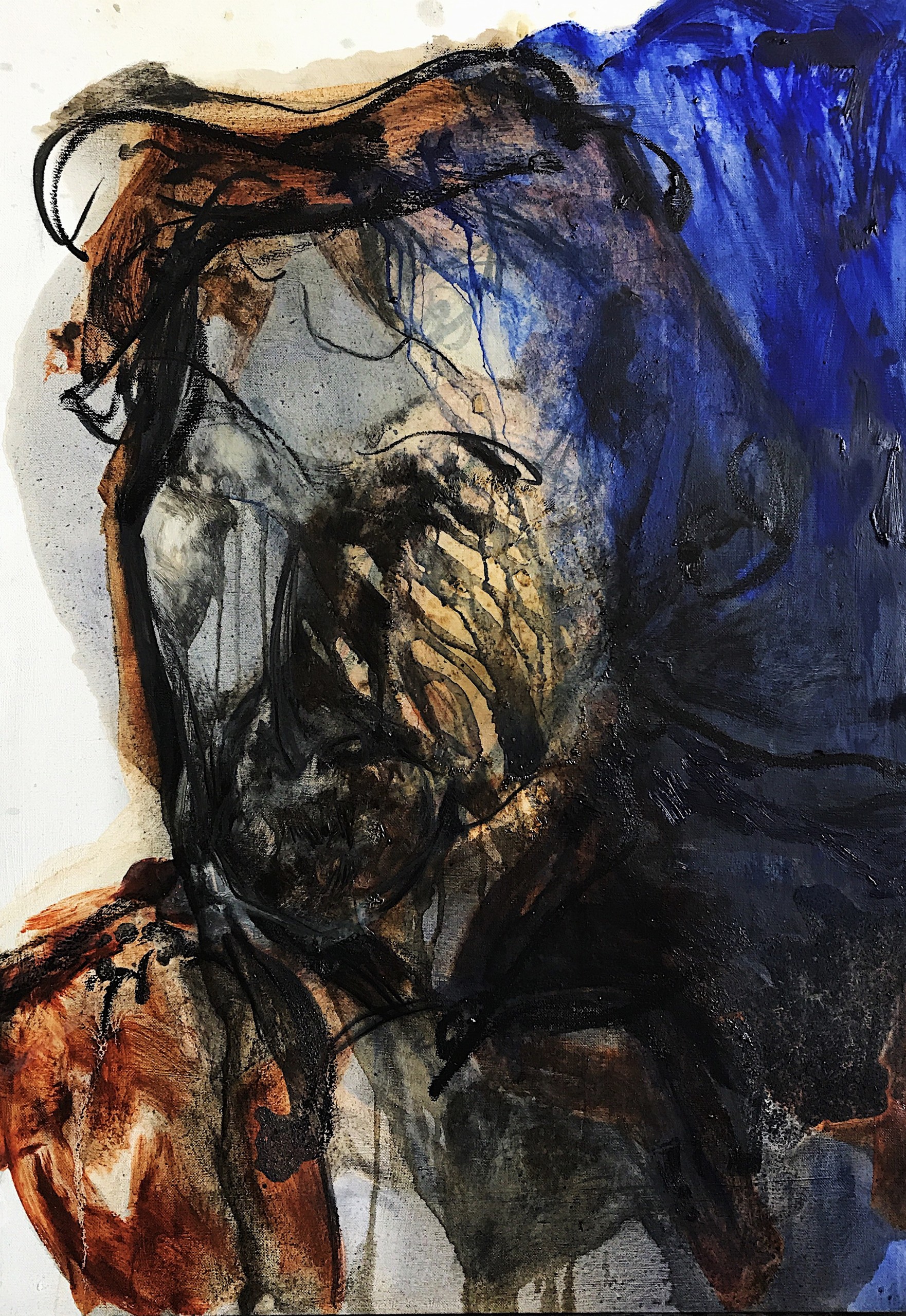The Island of the Gods (2017)
Mixed Media Portrait Series
Created in Tenerife, Canary Islands
Private Collection
The Island of the Gods (2017)
Mixed Media Portrait Series
Created in Tenerife, Canary Islands
Private Collection
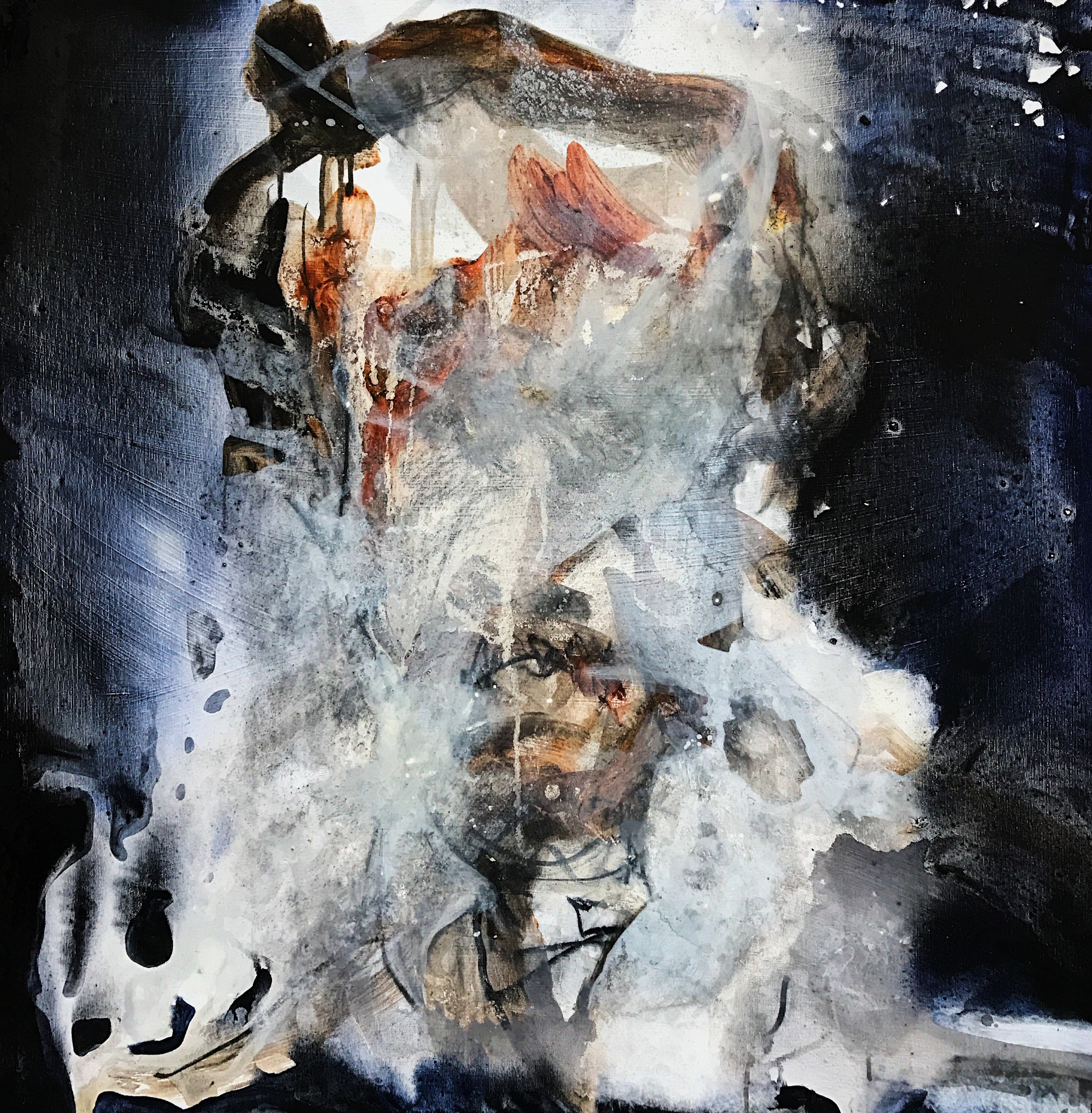
G, mixed media, 100x100cm, 2017
G, mixed media, 100x100cm, 2017
Paintings represent isolation that breeds either madness or enlightenment. In philosophical terms, Tenerife becomes a natural monastery where Gala confronts the essential questions of existence without the distractions of continental life. These paintings exist in such a threshold – between representation and abstraction, between human and divine, between form and formlessness. The figures emerge from what the mystics call the “unmanifest” – that fertile void from which all forms arise.
The distinction between “becoming” and “being” traces back to ancient Greek philosophy, particularly the tension between Heraclitus (“you cannot step into the same river twice”) and Parmenides (who argued for eternal, unchanging being). These Tenerife paintings embody Heraclitean flux – they capture subjects in perpetual transformation rather than fixed states.
In these works, the faces never fully arrive at completion. They exist in the moment of emergence,
caught between recognisable human features and pure painterly gesture. This visual indeterminacy mirrors the philosophical concept that reality itself is process rather than product.
caught between recognisable human features and pure painterly gesture. This visual indeterminacy mirrors the philosophical concept that reality itself is process rather than product.
The “in-between state” these paintings inhabit dissolves linear time. Past (the blank canvas), present (the moment of creation), and future (the completed work) collapse into a single gestural moment. This reflects Henri Bergson’s concept of “duration” – lived time as opposed to measured time. The rapid execution captures what he called “élan vital” – the creative impulse that drives all becoming.
Contemporary philosopher Gilles Deleuze would recognize these works as “rhisomatic” – they spread in multiple directions simultaneously rather than growing from a single root (traditional portraiture). Each brushstroke connects to others in non-hierarchical networks, creating faces that are assemblages of becoming rather than fixed identities.
There’s something sacred about the unfinished, the incomplete. These faces maintain their mystery precisely because they resist final definition. They embody what Keats called “negative capability” – the ability to remain in uncertainty and doubt rather than irritably reaching after fact and reason. The gods remain gods because they cannot be fully grasped.
This philosophical framework transforms the paintings from mere artistic experiments into meditations on the nature of existence itself – reality as continuous creation rather than static fact.
Paintings represent isolation that breeds either madness or enlightenment. In philosophical terms, Tenerife becomes a natural monastery where Gala confronts the essential questions of existence without the distractions of continental life. These paintings exist in such a threshold – between representation and abstraction, between human and divine, between form and formlessness. The figures emerge from what the mystics call the “unmanifest” – that fertile void from which all forms arise.
The distinction between “becoming” and “being” traces back to ancient Greek philosophy, particularly the tension between Heraclitus (“you cannot step into the same river twice”) and Parmenides (who argued for eternal, unchanging being). These Tenerife paintings embody Heraclitean flux – they capture subjects in perpetual transformation rather than fixed states.
In these works, the faces never fully arrive at completion. They exist in the moment of emergence,
caught between recognisable human features and pure painterly gesture. This visual indeterminacy mirrors the philosophical concept that reality itself is process rather than product.
caught between recognisable human features and pure painterly gesture. This visual indeterminacy mirrors the philosophical concept that reality itself is process rather than product.
The “in-between state” these paintings inhabit dissolves linear time. Past (the blank canvas), present (the moment of creation), and future (the completed work) collapse into a single gestural moment. This reflects Henri Bergson’s concept of “duration” – lived time as opposed to measured time. The rapid execution captures what he called “élan vital” – the creative impulse that drives all becoming.
Contemporary philosopher Gilles Deleuze would recognize these works as “rhisomatic” – they spread in multiple directions simultaneously rather than growing from a single root (traditional portraiture). Each brushstroke connects to others in non-hierarchical networks, creating faces that are assemblages of becoming rather than fixed identities.
There’s something sacred about the unfinished, the incomplete. These faces maintain their mystery precisely because they resist final definition. They embody what Keats called “negative capability” – the ability to remain in uncertainty and doubt rather than irritably reaching after fact and reason. The gods remain gods because they cannot be fully grasped.
This philosophical framework transforms the paintings from mere artistic experiments into meditations on the nature of existence itself – reality as continuous creation rather than static fact.


